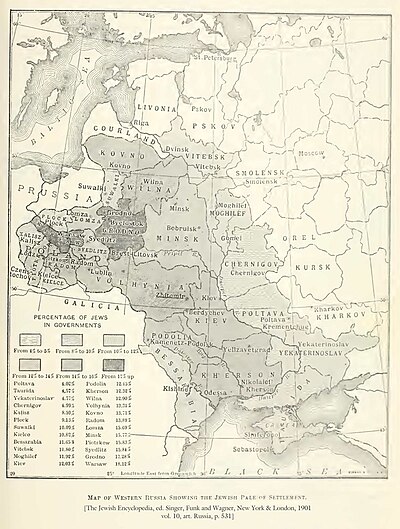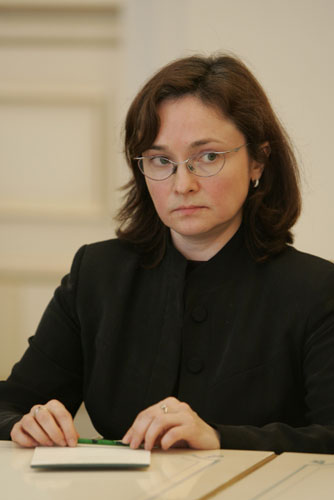.
.
.
Only a Jew who has failed Russia completely can still be a public figure with a platform in Russia.
The naive heartfelt questioning could all be clarified if one accepts the premise that Gorby was a foreign agent selected by the secret Jewish cabal for Western Intelligence (With the creation of Israel and its needs, the secret Jewish cabal in the Kremlin ceased to see Kremlin policies through the prism of the Communist ideology and the needs of the Soviet Union)
The Soviet Union thus became an obstacle to Israels interests.
Gorby stayed in Russia and not emigrate to Israel, to protect the interests of the Jews in the country numbering 500,000 in and around Moscow.
________________________________
Why Gorbachev Will Never Be Forgiven
He sold out the country he was elected to defendBy Nicolai Starikov (Stalinist apologist, and alternative media personality) in Russia Insider.
Originally appeared at Argumenty i Fakty. Translated by
Julia Rakhmetova and Rhod Mackenzie. A
famous Russian historian, writer and politician Nikolai Starikov was
interviewed by the popular AiF weekly on the occasion of the last Soviet
President 85th Birthday
.
At the start of
perestroika, I was fifteen. In 1987 I entered an engineering and
economic college. By the time I graduated, there was neither an economy,
nor a chemical industry – the fields I studied in. Many people like me
were forced to sell newspapers in suburban electric trains. I hardly can
forgive Gorbachev for that.
(As part of the alternative intelligentsia, always scrutinize the leaders along with their policies with a laser beam focus. Russia is an IMPORTANT huge country, and therefore inevitably it must have enemies....Israel, the USA, UK being the most prominent. Enemies that matter. Poland is an enemy state that does not matter. Not worth wasting a fart about.
Do the Russian leaders follow policies which follow the dictates of Washington? Then they are traitors.
Where do the leaders holiday?
What colour clothes do the leaders wear?
Where do the leaders children study?
With Whom does the leaders family associate with for private and business matters (marriage)?
Where do the leaders wives go shopping?
Where does the leaders deposit MOST of their wealth?
How do the leaders generate their total wealth?
The more corrupt they are, the more likely that they will be traitors.
ALSO given the true history of the country since Catherine the Great, and her creation of the Pale of Settlement Черта́ осе́длости, chertá osédlosti it is good to know which Russian leaders are Jews who have changed their identity and name, or Jew cock suckers who have evolved into power through the good grace of the secret Jew elite in Russia.

What was Jew Bolshevism from 1918--1991, if not one giant vengeance death wish against the best of Russian civilization?
Do the Russian leaders follow policies which follow the dictates of Washington? Then they are traitors.
Where do the leaders holiday?
What colour clothes do the leaders wear?
Where do the leaders children study?
With Whom does the leaders family associate with for private and business matters (marriage)?
Where do the leaders wives go shopping?
Where does the leaders deposit MOST of their wealth?
How do the leaders generate their total wealth?
The more corrupt they are, the more likely that they will be traitors.
ALSO given the true history of the country since Catherine the Great, and her creation of the Pale of Settlement Черта́ осе́длости, chertá osédlosti it is good to know which Russian leaders are Jews who have changed their identity and name, or Jew cock suckers who have evolved into power through the good grace of the secret Jew elite in Russia.

What was Jew Bolshevism from 1918--1991, if not one giant vengeance death wish against the best of Russian civilization?
The leaders determines the fate of the state.
Nor can I forgive
him for the fact that several students among my classmates and from
other classes died from drug overdoses; that some of my acquaintances
were killed in ethnic conflicts that spread throughout the country; that
others went on the bottle because they couldn’t find a job due to the
‘reforms’.
(1. Yes maybe..after Gorby left in 1991, and more importantly after he left the open mess, ugly base feelings of ethnic schism emerged that had previously been submerged by the Soviet Union,........ OR with encouragement from the USA/NATO deliberately. Gorby's fault clearly......burnt the house, and then went on the international lecture circuit with hands in pocket and a glib unapologetic demeanure.
2. Alcoholism.....but isn't this a perennial Russian problem from years before the Soviet Union? Weren't Soviet soldiers given vodka in WWII so that they would be semi-drunk with 'Dutch courage', and thus easier to be sent to the front lines to be slaughtered by the Nazis.....in neat rows like ducks in a ....)
3. ) Drugs became an epidemic in the 1980's before Gorby, when Soviet soldiers illegally entered Afghanistan. When Gorby pulled the Soviet soldiers out, he partially stemmed the follow of Afghan heroin into Russia via Soviet Central Asia. However narcotics addiction picked up again under Yeltsin and even Putin. When the USA occupied Afghanistan it increased dramatically(The primary reason why the USA is in Afghanistan....if we haven't figured that out yet), and Jew Oligarch installed puppet Putin helped the USA stay in Afghanistan with HIS initiative of the Northern Corridor, through which and Central Asia huge quantities of Afghan heroin poured into Russia with Putin's full knowledge, and total silence, and inaction against it in Russia. Thats not Gorby's fault...if we take the timeline of 1980--2016 as a ongoing problem that has not been fully resolved by the Kremlin still)
.
I also can’t forgive Gorbachev for
withdrawing our officers from Germany to the middle of nowhere and
leaving them homeless, nor for betraying our allies, beginning with
those from Afghanistan and ending with Cuba.
(1. The Soviet military numbered 5.8 million standing regular forces with conscripts in 1989...with expenditure of 18% of GDP on defense and security.....sustainable... no! There had to be military cuts of course with a collapsing economy accelerated by Gorby himself. Since Gorby didn't care about the military he did this too hastily, which destroyed the effectiveness of the Soviet military, and later the Russian army...clearly demonstrated by events in Chechnya. Gorby's callousness constituted a national security threat.....beyond mere withdrawing of troops from Eastern block countries. Had Gorby not collapsed the Soviet Union on the orders of his Western masters, there would still be Russian troops in East Germany, albiet at lower levels with a smaller defense expenditure to GDP.
2. Cuba...$5 billion subsidies to Cuba every year, with guarantee of a market for Cuban products...sugar and tobacco. Tough to sustain in the post Gorby market realities. CASTRO is the richest man in Cuba...billionaire and a CIA spy(His job description from the CIA is to scare the pants out of ordinary gullible Americans with his colourful Latino red hot speeches) .....so ??? Cuba is not strategically important for Russia IMHO)
3. Afghanistan is important for Russia. Afghanistan was an existential threat and not a direct threat in 1979 and a carefully contrived 'Bear Trap' for the Soviet Union planned by Brzezinski........create a 'Vietnam' for the Soviet Union in her backyard. SO, intellectually and physically it was never in the interests of the Soviet Union to partake in a USA CONSPIRACY....against Russia. Certainly not prolong it well after 1989 with Soviet troops on the ground, taking back Afghan heroin to Russia, in addition. And what great achievements did Soviet troops achieve in Afghanistan....kill 1.5 million civilians..is this called genocide? I think. Expose the weakness of Soviet military doctrine in counter insurgency warefare. Drop millions of mines shaped like toys, so that Afghan children would pick them up, and explode killing them, or maiming them....how beautifully thoughtful!!!!!!!!!!! Or Nazi like gassing of certain Afghan villages.....and so on...It is good the Soviet Union withdrew from Ariana in 1989.
.
2. Cuba...$5 billion subsidies to Cuba every year, with guarantee of a market for Cuban products...sugar and tobacco. Tough to sustain in the post Gorby market realities. CASTRO is the richest man in Cuba...billionaire and a CIA spy(His job description from the CIA is to scare the pants out of ordinary gullible Americans with his colourful Latino red hot speeches) .....so ??? Cuba is not strategically important for Russia IMHO)
3. Afghanistan is important for Russia. Afghanistan was an existential threat and not a direct threat in 1979 and a carefully contrived 'Bear Trap' for the Soviet Union planned by Brzezinski........create a 'Vietnam' for the Soviet Union in her backyard. SO, intellectually and physically it was never in the interests of the Soviet Union to partake in a USA CONSPIRACY....against Russia. Certainly not prolong it well after 1989 with Soviet troops on the ground, taking back Afghan heroin to Russia, in addition. And what great achievements did Soviet troops achieve in Afghanistan....kill 1.5 million civilians..is this called genocide? I think. Expose the weakness of Soviet military doctrine in counter insurgency warefare. Drop millions of mines shaped like toys, so that Afghan children would pick them up, and explode killing them, or maiming them....how beautifully thoughtful!!!!!!!!!!! Or Nazi like gassing of certain Afghan villages.....and so on...It is good the Soviet Union withdrew from Ariana in 1989.
.
Gorbachev
destroyed the economic bloc we formed with our allies – the Comecon -
transferring their ruble exchanges to USD. He disbanded the military and
political bloc – the Warsaw Pact - which was absolutely unnecessary.
Was he really so naïve as to believe that NATO would be disbanded as
well after that?
.
.
Did the USSR experience in
1985 the problems that it didn’t have back to 1941?
(The challenges of 1941 were far greater with an economy that was 5 times smaller than 1989, and technologically far more behind than in 1989...with fewer educated people than 1989......absolutely no excuse given what China has achieved since)
.
Why did we manage to resist back then, failing now? And how did China, which had the same development model as we but lagged far behind us, succeed in achieving fantastic results, while the USSR broke down? Saying, that the Soviet Union didn’t have any prospects is to deny reality.
.
(The challenges of 1941 were far greater with an economy that was 5 times smaller than 1989, and technologically far more behind than in 1989...with fewer educated people than 1989......absolutely no excuse given what China has achieved since)
.
Why did we manage to resist back then, failing now? And how did China, which had the same development model as we but lagged far behind us, succeed in achieving fantastic results, while the USSR broke down? Saying, that the Soviet Union didn’t have any prospects is to deny reality.
.
Gorbachev
didn’t fight to keep the USSR from falling apart, but to save his own
influence. If not, as the legitimate president of the Soviet Union,
controlling powerful secret agencies and the army, in December 1991 he
could have had the three conspirators in the Belavezha Forest arrested.
Instead, he announced his resignation…
.
So I don’t see anything positive in this person. And most people were disappointed in him by the year of 1991.(Only disappointment?)
.





